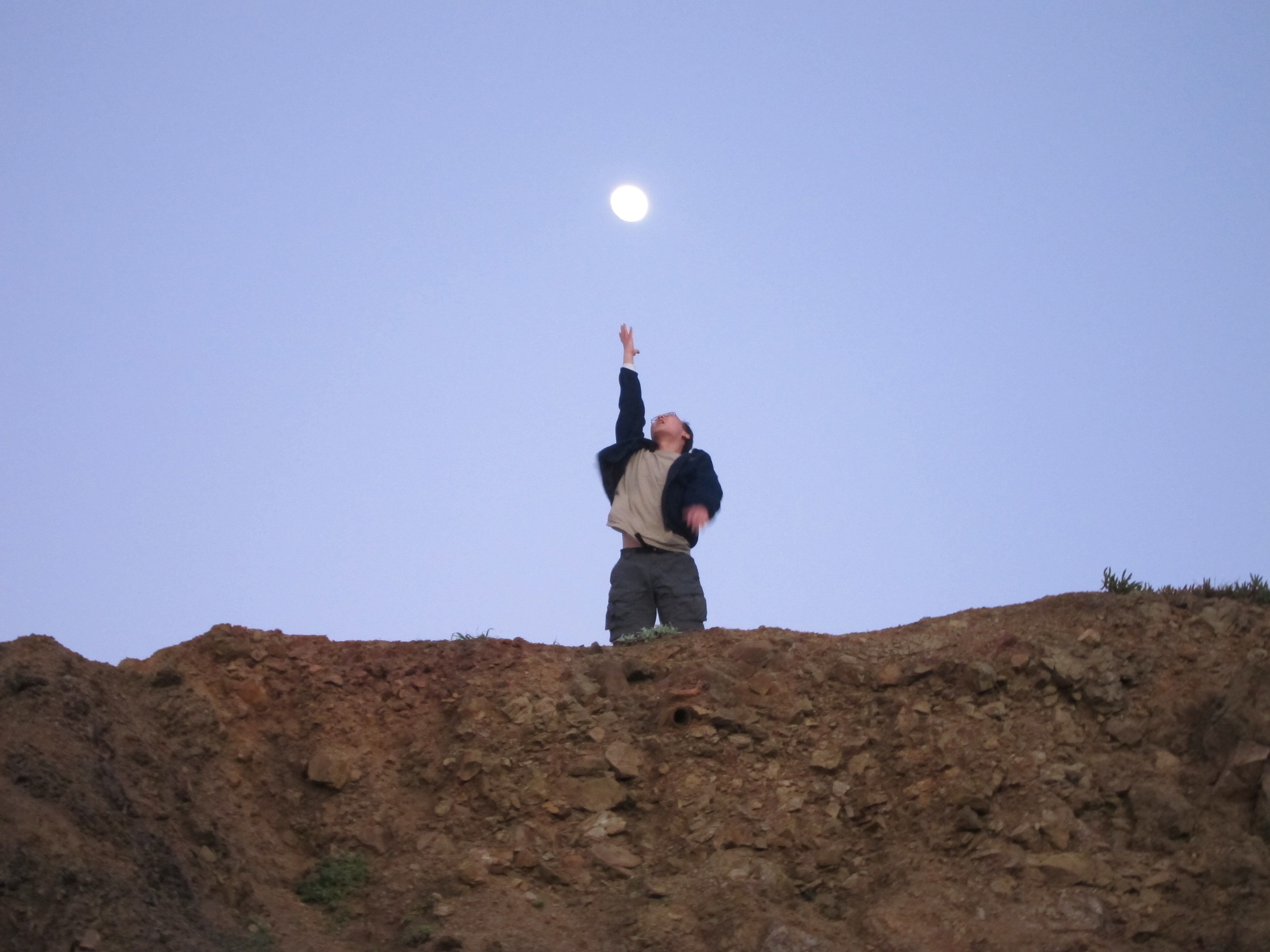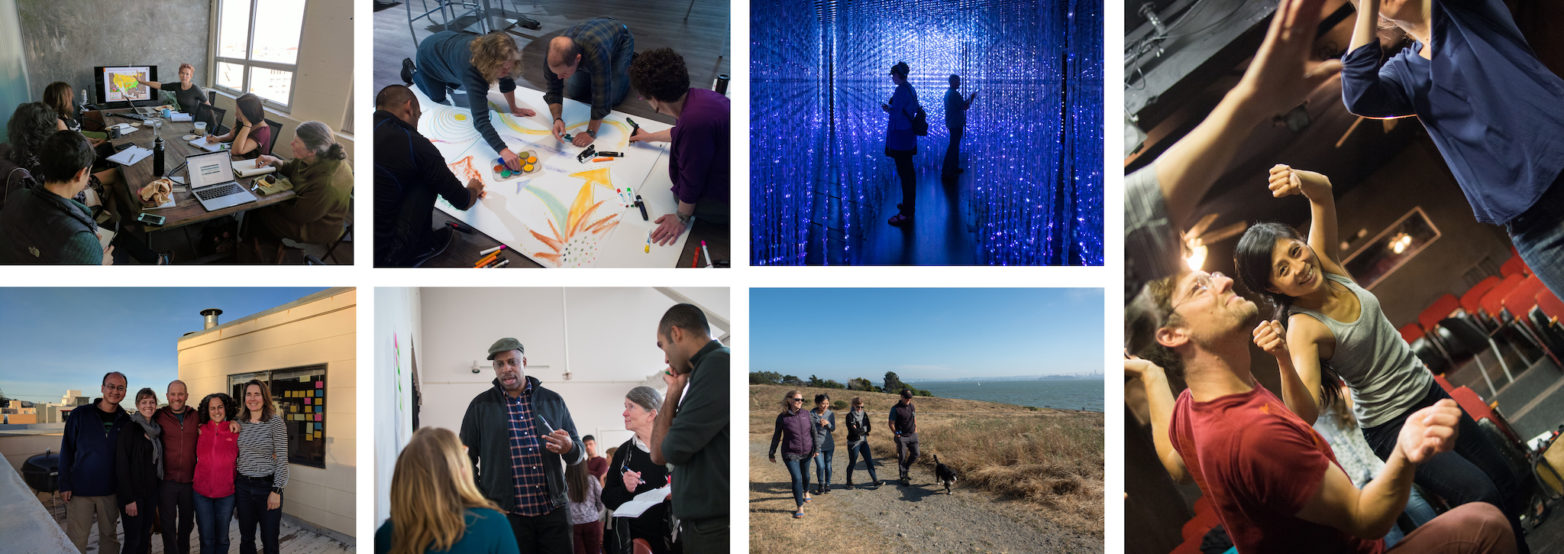
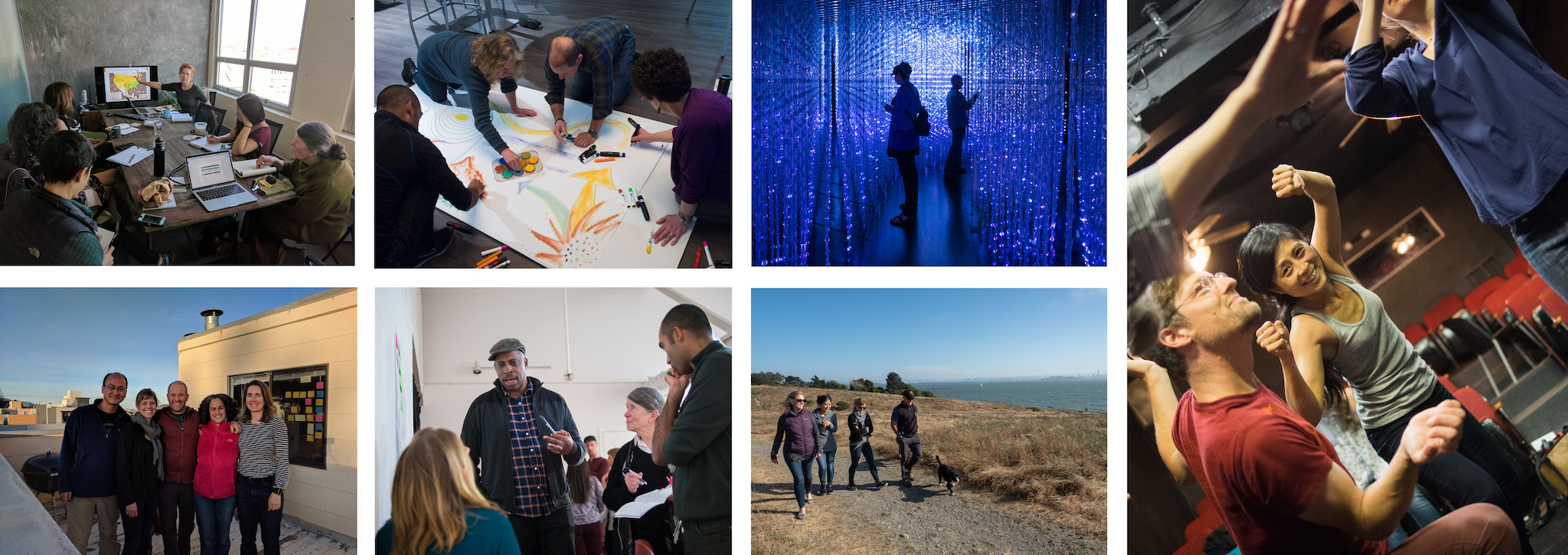
In 2013, I left the consultancy I had co-founded to rest, reflect, and reconsider my approach to helping groups collaborate more effectively. That time led me to the premise that has become the foundation of my work since — that getting better at collaboration is “simply” a matter of practicing, and the more we figure out how to encourage practice, the better we all will get at collaboration.
I wanted to explore this premise while also taking care of myself and maintaining balance in my life. I was not ready to start another company, but I was also afraid of feeling isolated. I had felt that way for much of the early part of my career, and being part of a tight-knit team at my consultancy had been a huge joy. I wanted the best of both worlds — the support, learning, and joy of being part of a close team along with the freedom and flexibility of being independent.
I think many people’s first instinct for addressing professional isolation, especially as an independent, is to form a group that meets once a month or a few times a year. I think this is a great thing to do, and I think more people would be well-served if they did this. However, I wanted deeper relationships and learning than an occasional coffee with colleagues would provide.
First instincts also don’t always result in optimal designs. I wanted to model a less knee-jerk, more decentralized approach to creating communities of learning and practice. Specifically, I wanted to play with two design principles:
- Be selfish, but in a networked way
- Frequent collisions
Armed with this clarity, I started to experiment.
Be Selfish, but in a Networked Way
When it comes to teams and networks, I often hear rhetoric around the importance of “selflessness.” I understand and appreciate where this comes from, but I don’t think that this is the best framing. Groups perform best when individual interests align with those of the group. You want people to find that alignment without sacrificing their individuality. Because many good collaboration practitioners tend toward the self-sacrificial, I often find myself encouraging others to “be selfish.”
As I embarked on building a new network for myself, I wanted to model selfishness (in a networked way), trusting that my self-interest strongly aligned with a larger, collective purpose. “In a networked way” meant finding ways to share and to encourage emergence without interfering with my selfish goals.
Here’s an example of how this manifested. In late 2014, a colleague had introduced me to Janne Flisrand, a Minnesota-based practitioner who was doing interesting work. Janne was planning on visiting San Francisco and asked if I wanted to grab coffee while she was there. I said yes, then, on a whim, asked:
If I organized a meetup for you, would you be willing to chat informally about your work? I’m sure I could pull together at least 3-5 good folks, and we could continue the conversation over dinner as well.
Here was my selfish reasoning:
- I valued the opportunity to have some get-to-know-you time, but I also wanted to dive more deeply into Janne’s work. Coffee sessions aren’t usually long enough for that.
- If I found value in a deep dive, I figured others would find value in it as well. It wouldn’t hurt me to invite a few others. Worst case, everyone would say no, and I’d get lots of one-on-one time with Janne, which was the original plan anyway. Best case, other good folks would come, other relationships would get built, and awesome stuff would emerge from that.
Janne was enthusiastic about my offer, which meant I was now on the hook for trying to organize something. Once again, I wanted to experiment with this principle of maximum selfishness (but in a networked way). This was how it played out:
- Scheduling. Rather than see who was interested in attending, then trying to find a date that worked for everyone, I picked a date that worked for Janne and me, then invited others to accommodate our schedule. No mass Doodles!
- Venue. I invited people without picking a specific location, then asked if someone would be willing to host. I figured that if no one responded, then I was no worse off than I was before. However, if someone did respond, then I wouldn’t have to find a space at all, which appealed to my selfish (and lazy) side. As it turned out, someone did end up offering to host!
- Invitations. I only gave people one week’s notice. If shorter notice meant less people, then we would simply have a more intimate conversation and I wouldn’t have to find as big of a space. If we got lots of people, then my community would start to become more interconnected, which makes me happy and often results in something interesting. Either way, it was a win. I didn’t think too hard about whom to invite, and I ended up asking 18 people. To my surprise, 12 said yes, and some folks asked to bring guests!
- Design. I wanted to model something that was participatory, but also easily replicable. That meant not investing a lot of time designing anything too intricate. I decided to do a simple fishbowl, where Janne and I would sit inside a circle with two other empty seats, and others could join the conversation simply by grabbing one of the empty seats. Afterward, we’d invite whomever wanted to join for drinks and dinner.
It took me less than an hour to:
- Conceive of this experiment
- Think of some additional folks to invite
- Invite them
This small investment in time enabled me to convert a coffee date into a wonderful gathering, where I got to delve further into a colleague’s work with a dozen great colleagues and to introduce these folks to each other, all without having to juggle calendars or find a space! As always happens, interesting stuff emerged from this gathering, including one new relationship resulting in a large new project for a colleague.
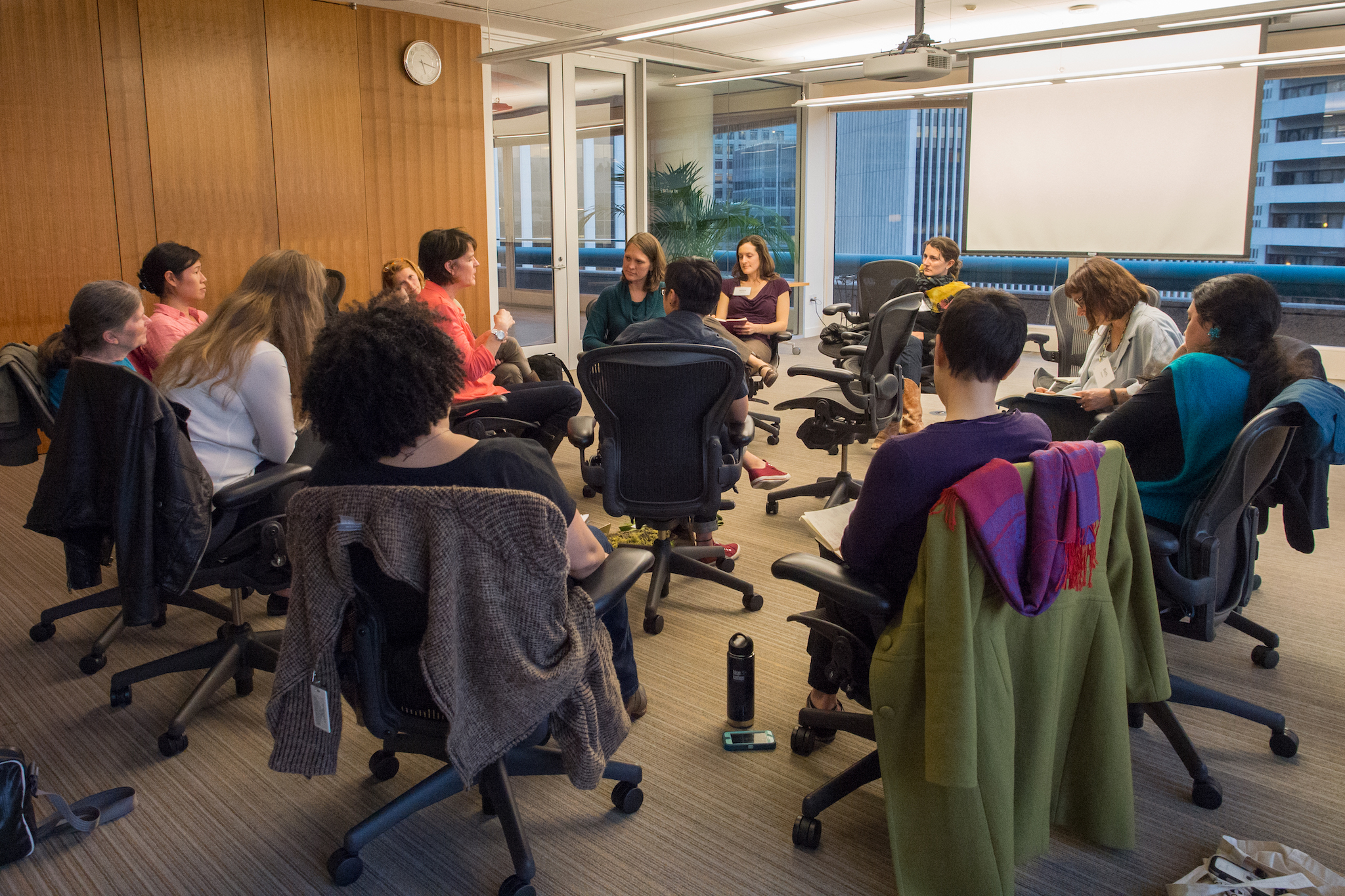
This experiment worked so well, I decided to continue it over the next two years, playing with different variables, but always strictly conforming to this principle of networked selfishness. I tried to manage expectations by being transparent about my organizing principles and by constantly encouraging others to be similarly selfish. My hope was that selfish replication would result in lots of self-organizing and interconnection among Bay Area practitioners. This didn’t happen as much as I would have liked, but I was happy about the good things that did emerge from my small acts of networked selfishness.
Frequent Collisions
Another design principle I wanted to explore was frequent collisions. Many years earlier, I had read a wonderful article about how people with sisters tend to be happier. It postulated that this was because people tended to speak more often with their sisters than their brothers. As someone with two sisters, this resonated.
It also jived with my experiences on teams. At my company (which was virtual), I talked to my co-founder every day, I talked to my other teammates several times a week, and we used online tools to stay in touch asynchronously. We talked a lot about work, but we also talked about our lives, and often, we were just silly. Because we talked frequently, we didn’t have to spend a lot of time catching each other up on things, and it was easy to dive right in and also to give each other support.
This was in the back of my mind when I got an email in 2013 from my friend and colleague in Montreal, Seb Paquet, suggesting we catch up. Our resulting conversation reminded us both how much we enjoyed talking with and learning from each other. Rather than wait around for another excuse to schedule a catch-up, I proposed that we schedule a weekly standing time for the next four weeks with no agenda. To my surprise, Seb accepted.
We called the experiment, SEEK, a somewhat garbled, but easy-to-pronounce combination of our initials. We talked a lot about both our work and our lives. Because we were talking regularly, we didn’t have to provide context and background each time we spoke, which allowed us to get deep quickly and consistently.
At the end of each conversation, we recorded a three-minute video where we each shared one takeaway from the conversation. It was a way to have a private, intimate conversation while also leaving a public trail, hopefully provoking conversations with other colleagues while also inspiring others to replicate our experiment.
Seb is incredibly smart and thoughtful, and talking with him enabled me to crystallize and sharpen what I was learning from many of my experiments. For example, here’s the video takeaway from our second conversation, which not only led to some significant changes to my Goals + Success Spectrum, but was also the impetus for me to package and share what has become my most popular and impactful toolkit:
Despite being incredibly busy, we both found our regular conversations productive and gratifying. Each week, we both found ourselves looking forward to our next session. After our four-week experiment ended, we decided to continue talking weekly. We ended up more or less maintaining our weekly pace for three more months.
Colearning Experiment
My experiments with Seb helped validate my desire for frequent engagement. It also helped validate my “selfish” approach. By asking for what I really wanted — in this case, frequent engagement — I not only got what I wanted, but so did my partner. I was ready to ask for even more.
In late 2013, I pitched an idea to five colleagues. They were all Bay Area-based independents, all changemakers, all collaboration practitioners at some level. I knew all of them well, and they knew each other somewhat, mostly through me. I asked them to engage in an eight-week experiment where we would all pair up and commit to checking in with our partners once a week for eight weeks. After each checkin, we would all share one takeaway on a shared mailing list.
Four of my colleagues — Pete Forsyth, Rebecca Petzel, Amy Wu, and Odin Zackman — agreed! Acknowledging a problem that we all shared, Odin cheekily suggested that we call ourselves “COBI” for “Chronically Overwhelmed, But Improving.” We eventually settled on “Colearning 2.0,” a name suggested by my friend, Mariah Howard. The “2.0” (which we eventually dropped) was a nod to our intention of going beyond the “obvious” ways most tried to design communities of practice.
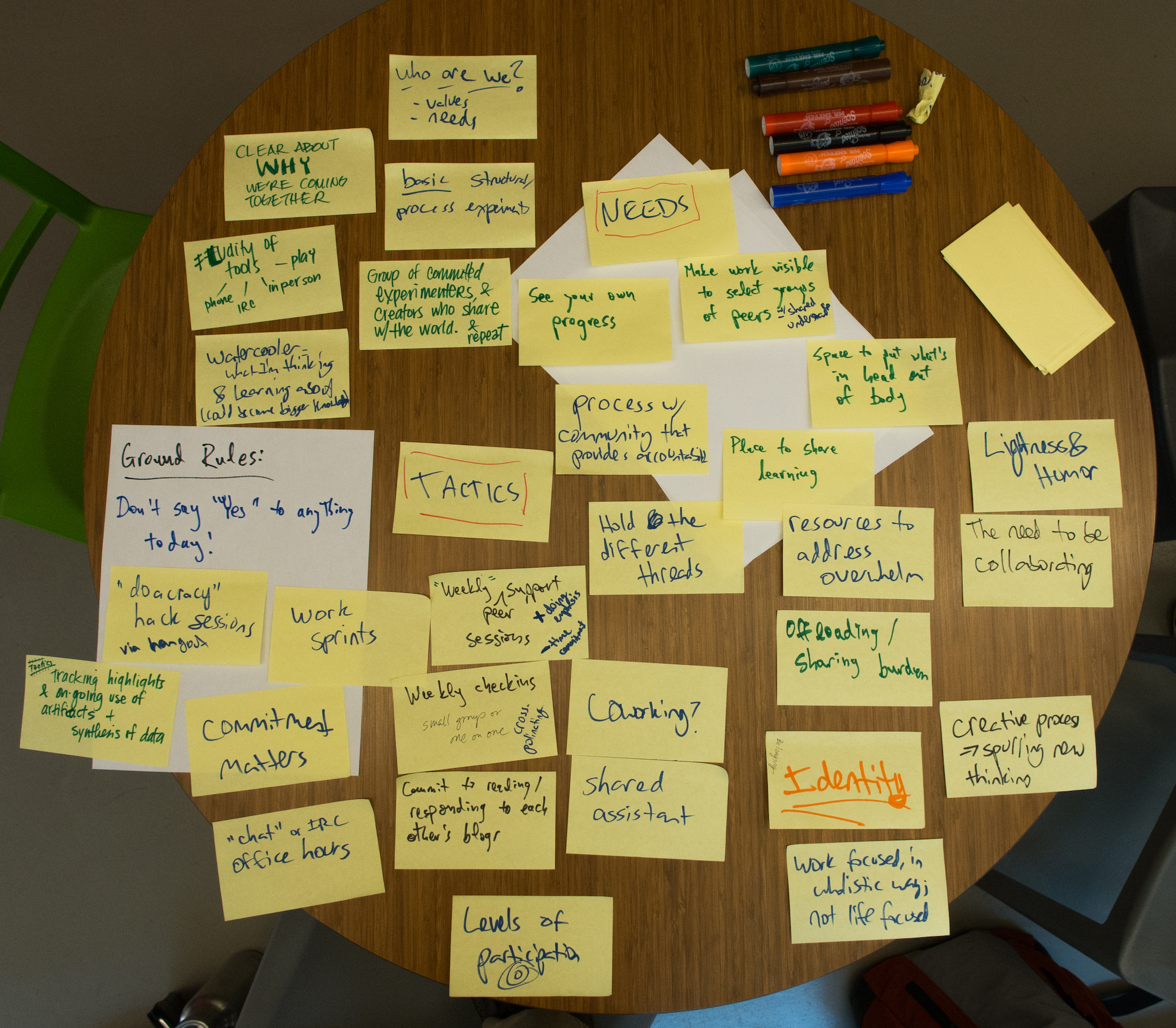
We also agreed on the following purpose statement:
Create a safe, delightful space where we make our individual work visible to a select group of peers and deepen our learning together.
We think this will help us better achieve our individual goals by:
- Exchanging more substantial feedback on the issues we’re facing
- Spurring new, creative thinking
- Helping us see our individual progress (which, in turn, will help us be more compassionate to ourselves)
- Creating a sense of peer support and accountability
- Countering the overwhelm we’re all prone to feeling
- Bring greater purpose to our work through sharing learning with community
Because we were an odd number and I had already experienced a regular pair checkin with Seb, I decided to do my checkin by email to the whole group.
After eight weeks, one of the pairs had met regularly, the other less so. But the takeaways had been wonderful, and everybody found the experience useful enough that they wanted to continue. We made one small change. Participating virtually with the whole group was not as good as having a partner, so I asked Kate Wing if she would join the experiment as my partner, and she accepted. (Five years later, Kate and I still check in regularly almost weekly. More on this in an upcoming blog post.)
This second phase of Colearning lasted through the end of 2015. We had mixed experiences overall with the checkins. For some (me and Kate included), they went wonderfully. For others, not so much. We experimented with different pairs and formats, I tried this experiment with another group, and I encouraged others to experiment with it on their own. I never found a formula for general peer support that seemed to work for everybody.
However, I walked away with enough confidence in the value of frequent, regular contact, that I began incorporating it into my programs and designs with more narrow purposes, such as Collaboration Muscles & Mindsets. I often faced resistance from participants, who were nervous about the time commitment, but that resistance would start to dissipate almost immediately, and by the end of these programs, many would say that they looked forward to these regular conversations each week.
More importantly, other wonderful things started to emerge with this group. People would often request peer assists about things ranging from the mundane and technical (such as social media) to people’s actual work projects. These were always well-attended and highly valued. Many of us shadowed each other’s work, learning from watching our peers actually doing the work. One person created a shared repository of resources, that many of us still use and contribute to. Another group formed a book club.
We also organized a variety of face-to-face gatherings, ranging from an improv workshop to site visits to hikes and dinners. In September 2014, a group of us organized a one-day, Open Space, peer learning workshop in San Francisco that 20 people attended.
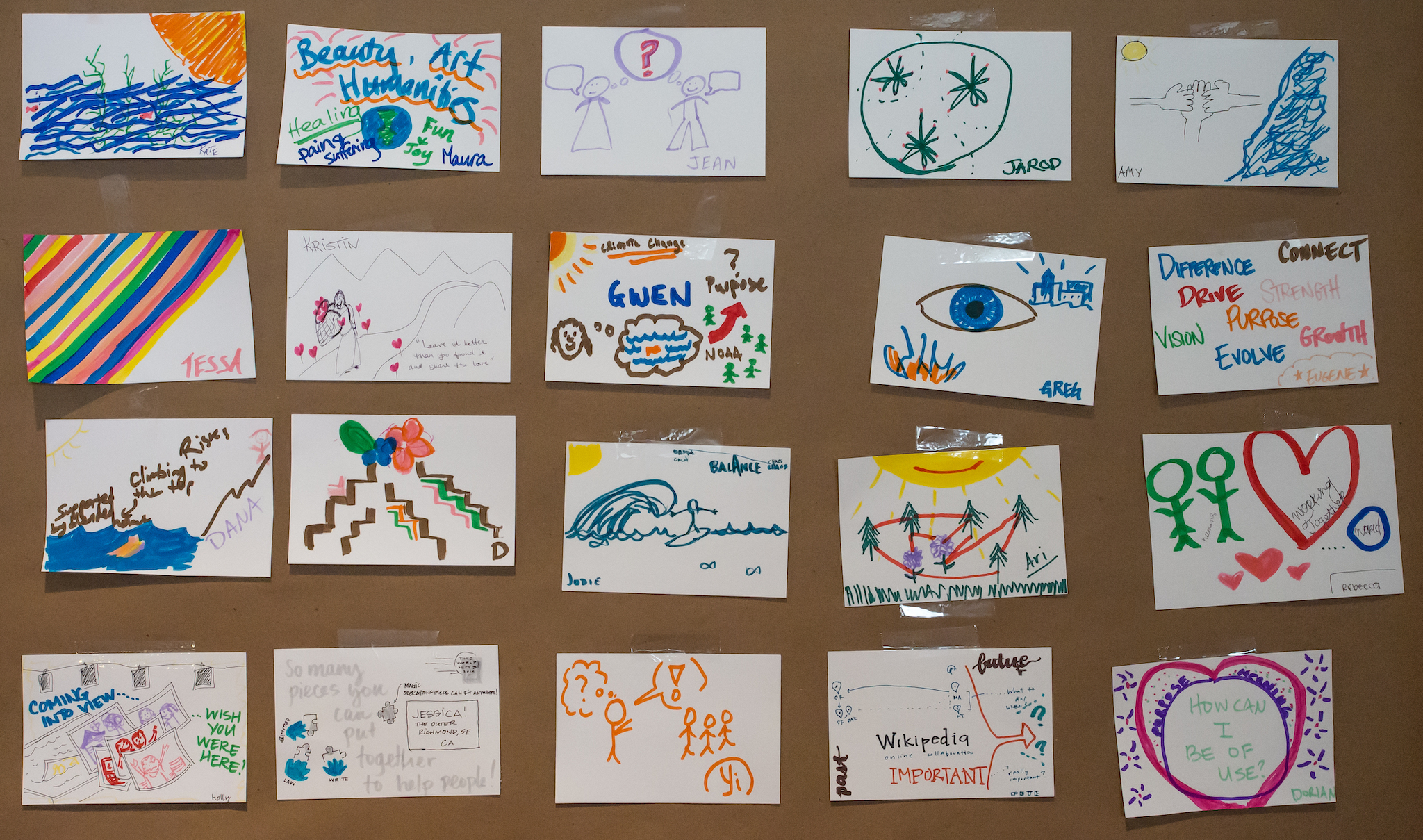
We were a leaderful group by design. There were no officially-sanctioned events, and there was never any asking for permission. People organized things they themselves wanted to participate in, and invited others — including those outside of our little group — to participate.
Perhaps the most gratifying thing that happened was that people started collaborating on work together. This was never an explicit goal of the group, but it was something I hoped would happen. Several people did (and continue to do) projects together, in some cases forming partnerships and collectives.
Toward the end of 2015, we started experimenting with Slack as another way of staying engaged remotely. Soon thereafter, we officially brought the checkin portion of our experiment to a close and migrated from the mailing list to Slack. This brought us to our third and final phase of Colearning, which lasted through the end of 2018.
Slack increased online engagement and also made it a little bit more fun. People also continued to self-organize. In early January 2017, we experimented with a joint retreat for individual visioning and strategizing. We’ve continued doing these twice a year ever since.
All told, 17 people participated in this experiment, with a final count of 13. We started off as a Bay Area group, but we experimented with remote participants, and ended up with people from Chicago, Portland, and Los Angeles.
New Beginnings
I started playing with all of this six years ago because I was afraid of losing what I was leaving — specifically, deep relationships with other colleagues. As a result, I focused my energies on people who were working independently, regardless of how much of their work was specifically focused on collaboration. These different experiments had taken me above and beyond what I had hoped for, and I was enormously grateful.
However, my priorities for community has shifted over the years. I am less concerned about isolation and more concerned about deepening my (and other’s) practice around collaboration, which is more mission-aligned for me.
Late last year, I decided to stop participating in the Colearning experiment. As I assured the group:
Just because I won’t be on a Slack with all of you doesn’t mean I won’t be in community with all of you…. Obviously, I have deep relationships with all of you, and I hope to continue deepening those. I hope to stay in touch with all of you, I plan on continuing my weekly checkins with Kate as long as she’s willing to put up with me, and when I organize practitioner events, you all will be high on my invitation list….
Networks are about relationships. Experiments and more formal structures can come and go, but those relationships don’t go away. I wanted to be clean about my exit from the group, but I also didn’t want us to see that as the dissolution of community. When I left, someone started a new Slack with a different frame. Many of us continue to stay in close touch, and the bi-annual retreats have continued.
Most importantly, we had the opportunity to celebrate what we had done together (and mourn its passing), and I feel free to focus my energies on designing something new and more relevant to what I care most about right now. I’m a little bit scared, as I always am when diving into the unknown, but I’m also excited about creating something new.
Thanks to H. Jessica Kim and Eun-Joung Lee for reading early drafts of this post. This is the third in a series of blog posts about building a network of collaboration practitioners. The others are:
- Building a Network of Collaboration Practitioners (February 7, 2019)
- A Personal Case Study in Network-Building: Pre-IPO (February 20, 2019)
- A Personal Case Study in Network-Building: Selfishness, Frequent Collisions, and my Colearning Experiment (May 7, 2019)
- What We Learned from Five Years of Check-ins (May 14, 2019)
- Design Sketch for a Network of Collaboration Practitioners (November 14, 2019)
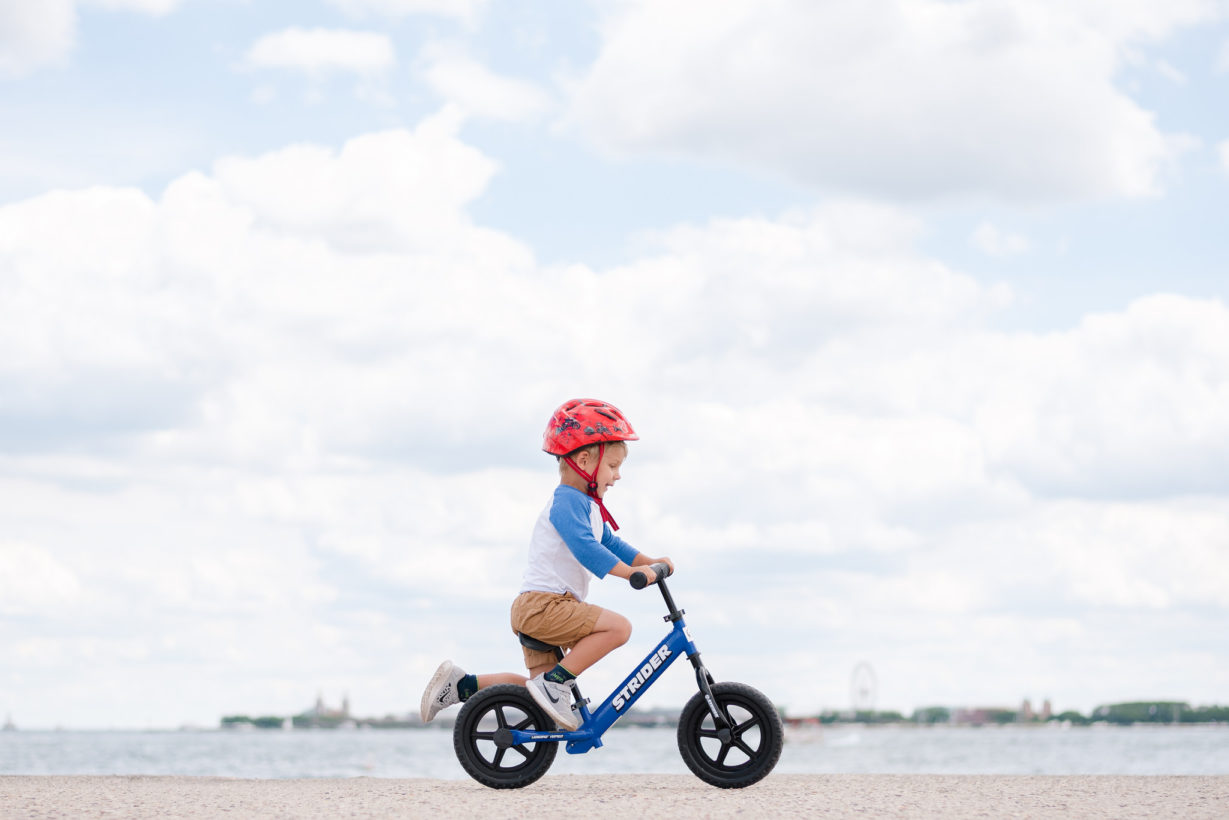
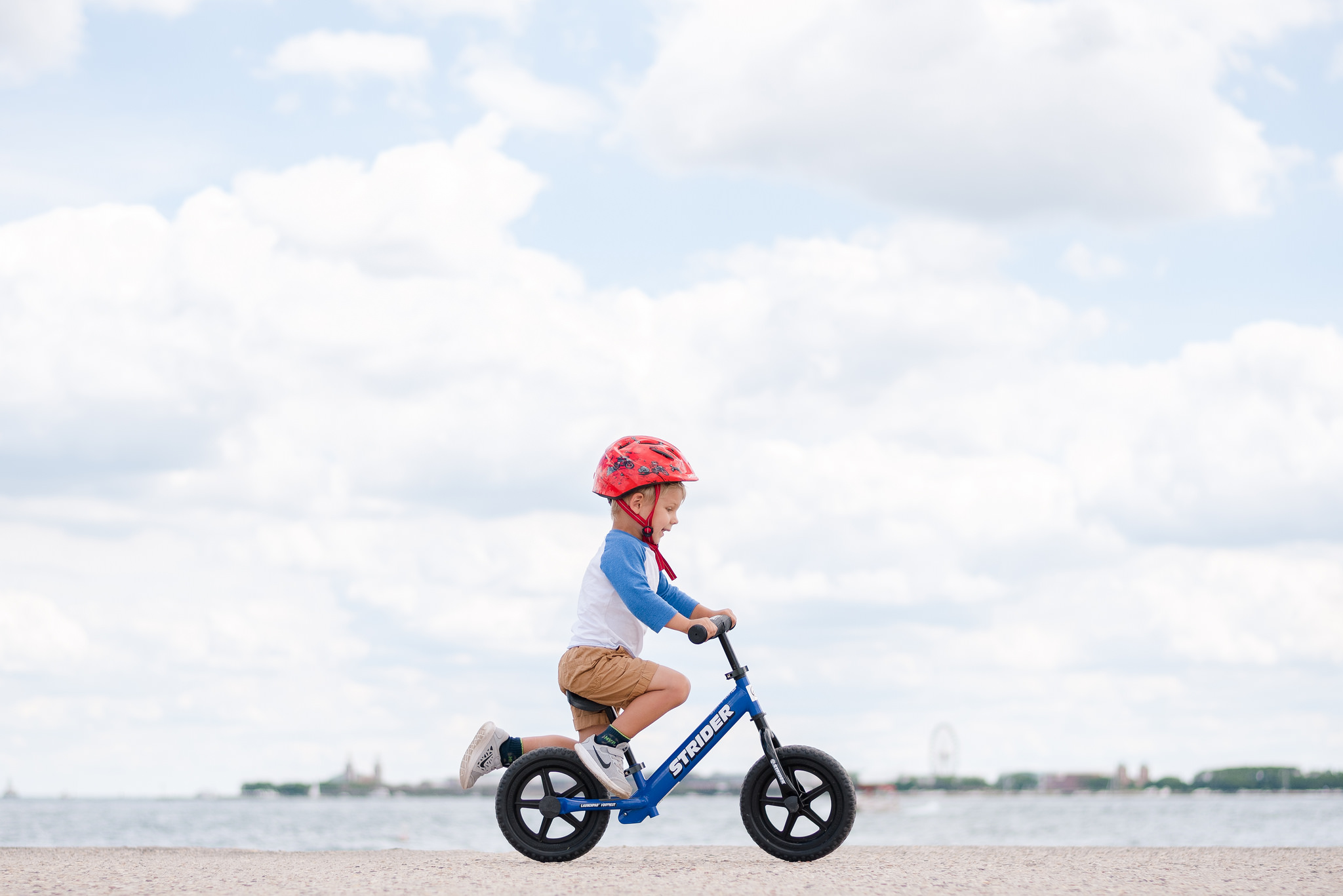
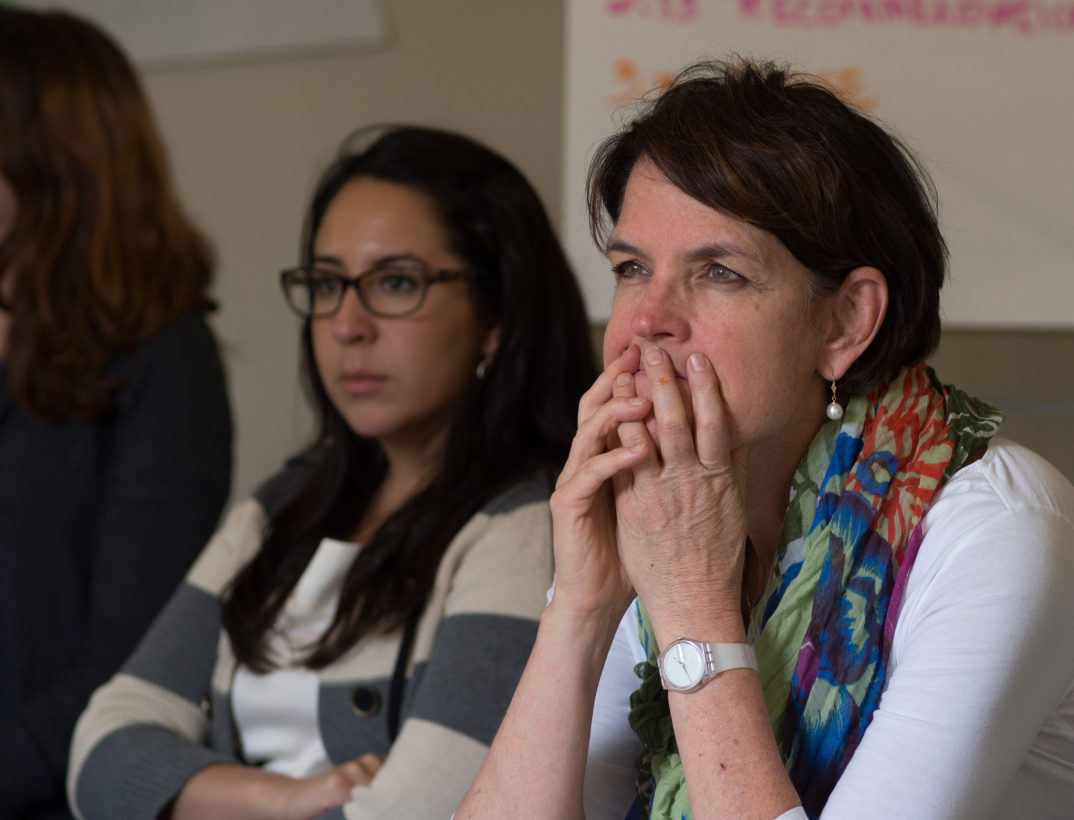



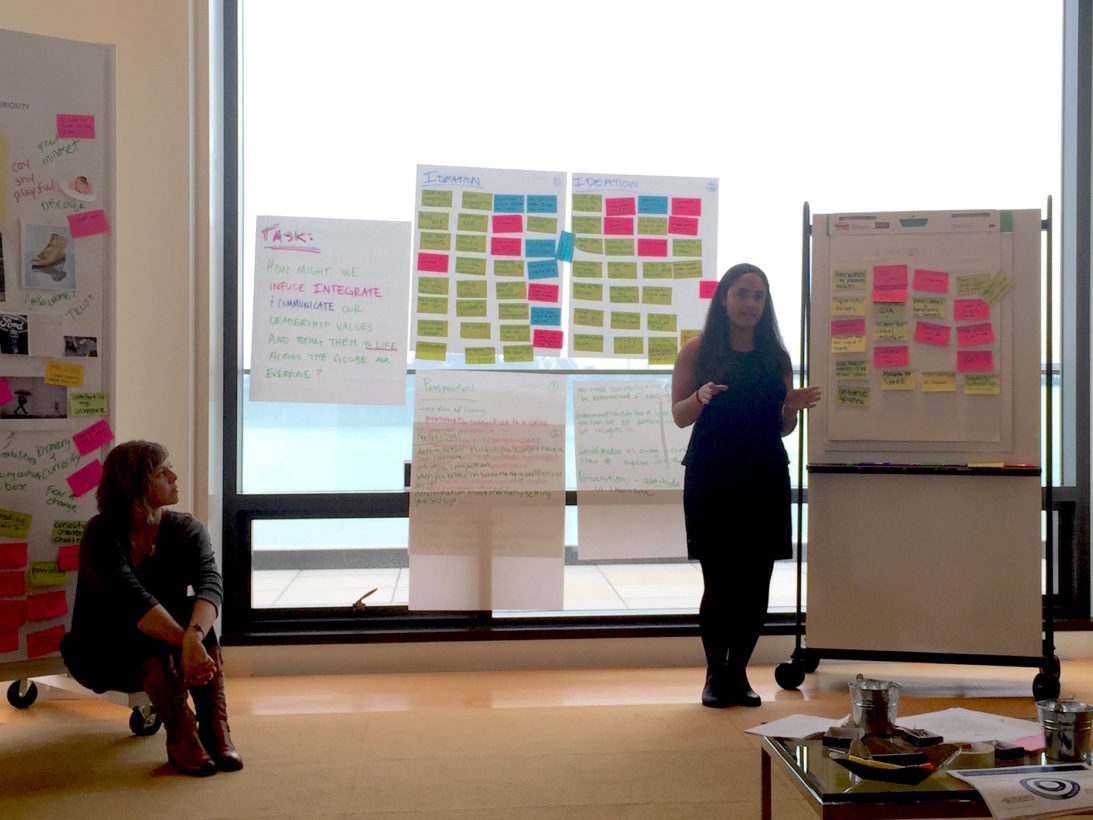
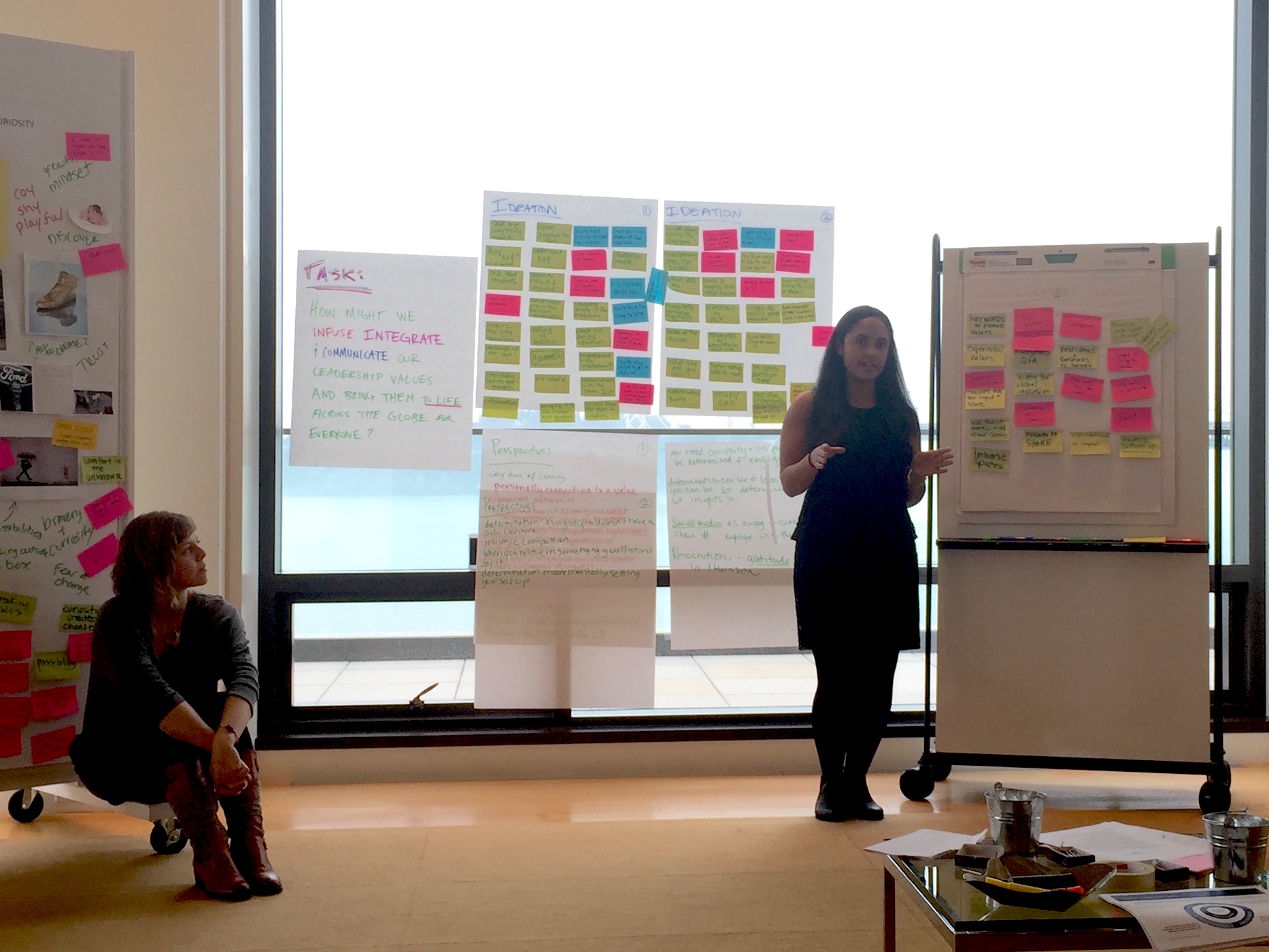
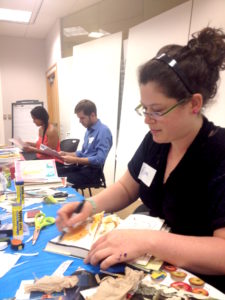 Soon after joining Gap Inc., I started to explore how to create alternate spaces for communication that could scale and that skirted hierarchical limitations.
Soon after joining Gap Inc., I started to explore how to create alternate spaces for communication that could scale and that skirted hierarchical limitations.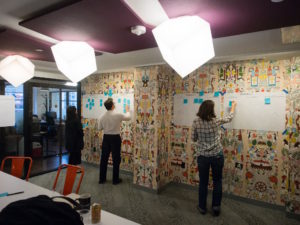 Eugene’s work has complemented a deficiency I found in many innovation and co-creation initiatives, including my own:
Eugene’s work has complemented a deficiency I found in many innovation and co-creation initiatives, including my own: 
